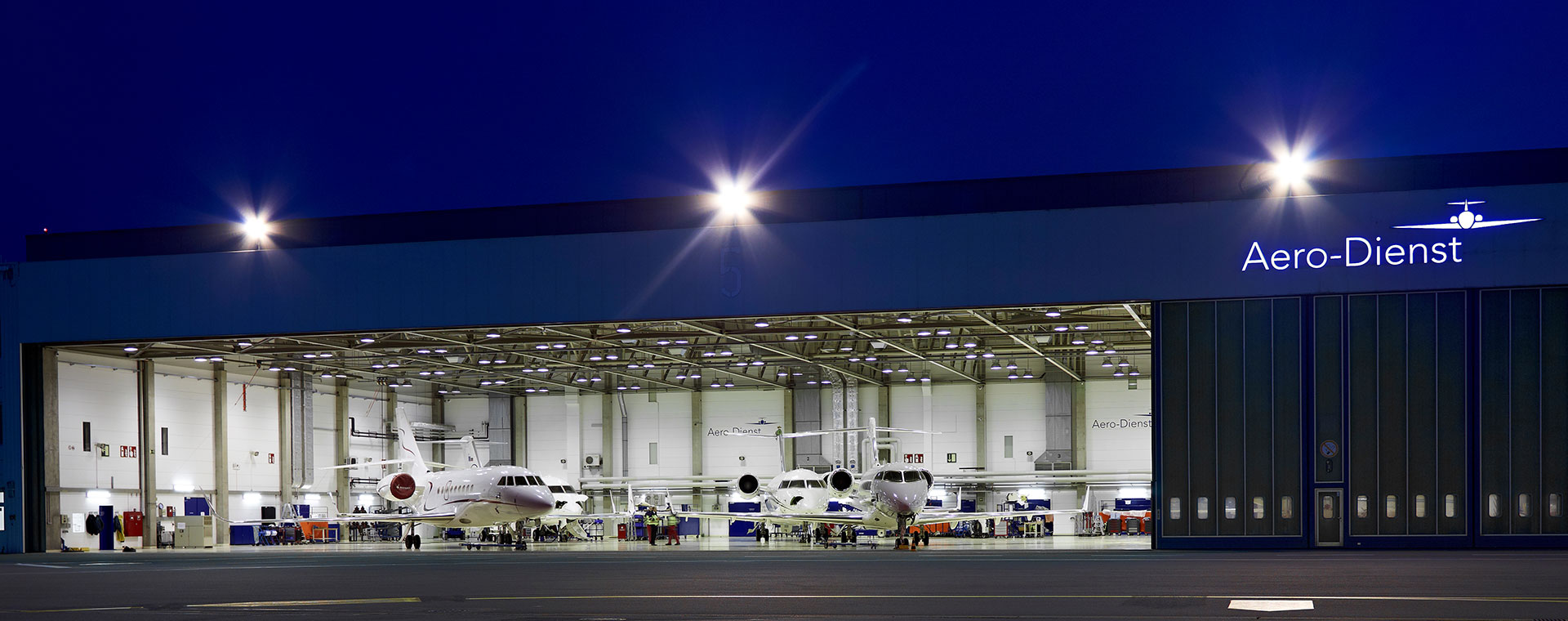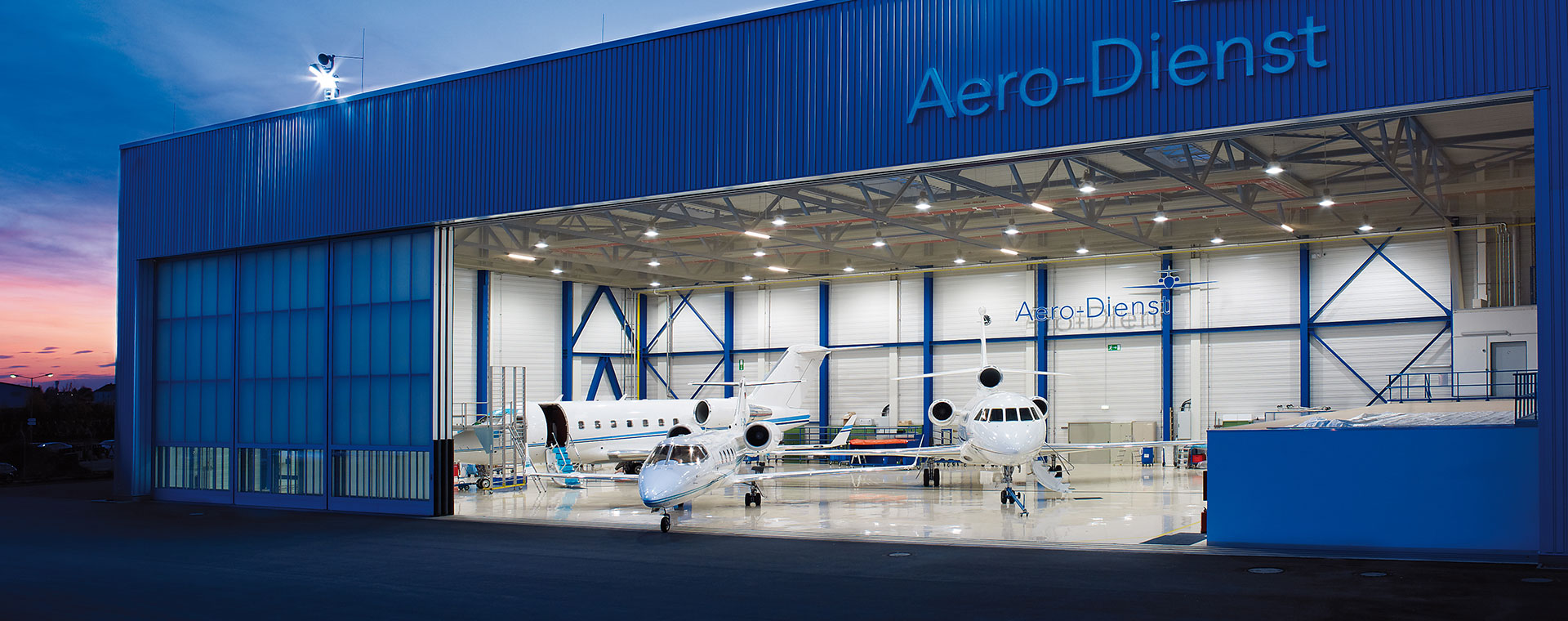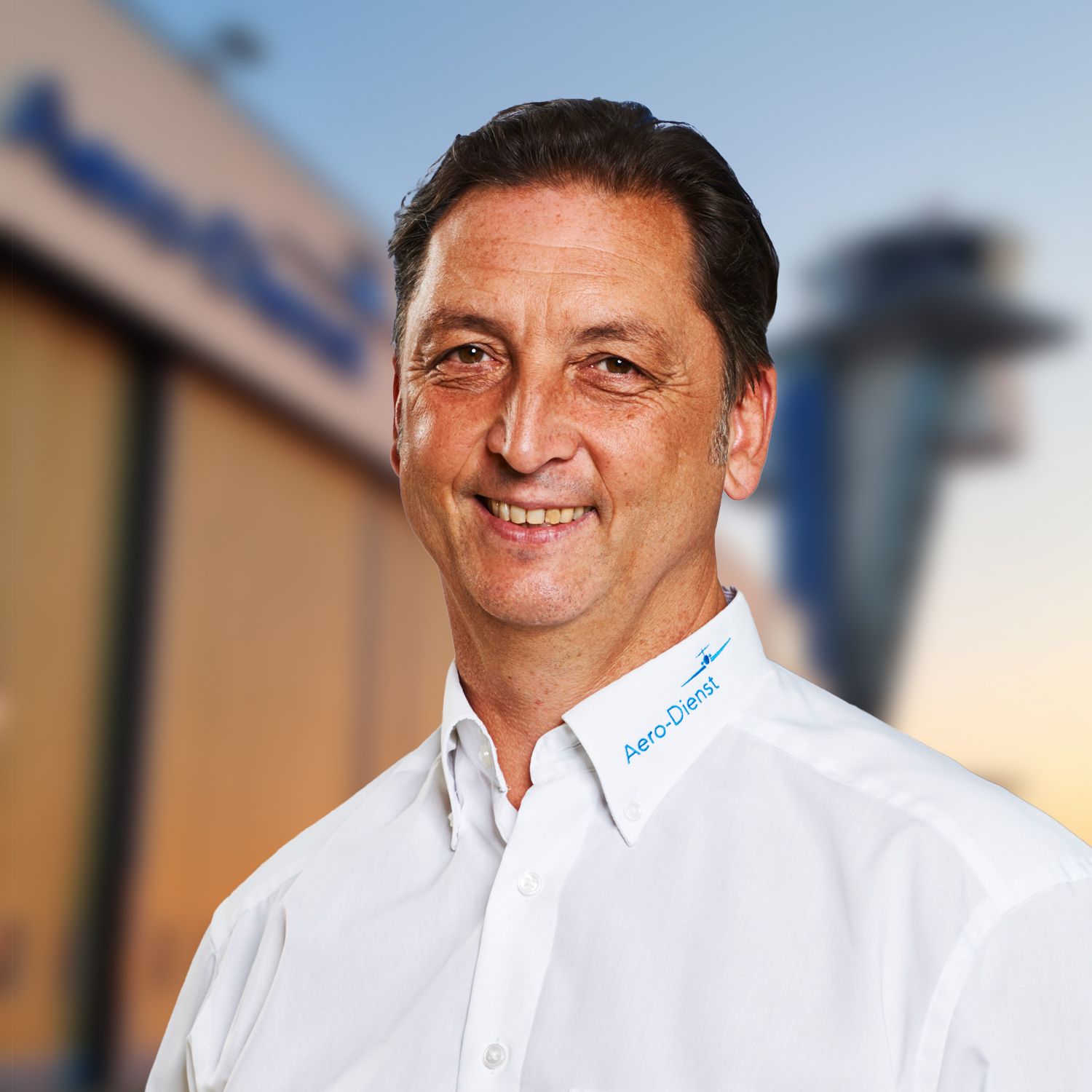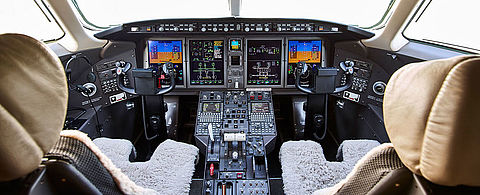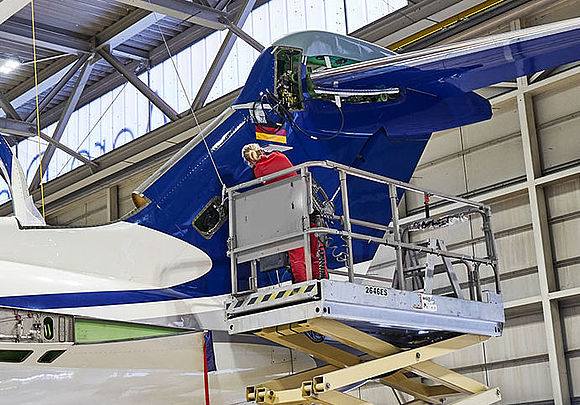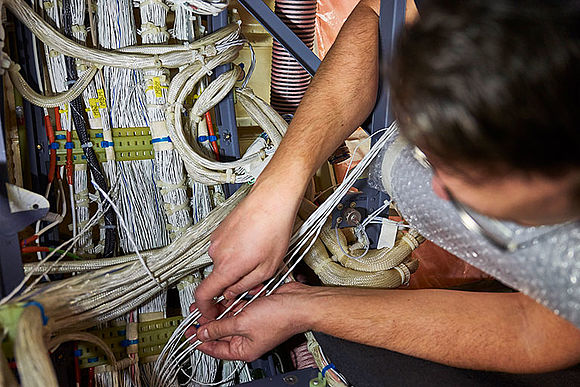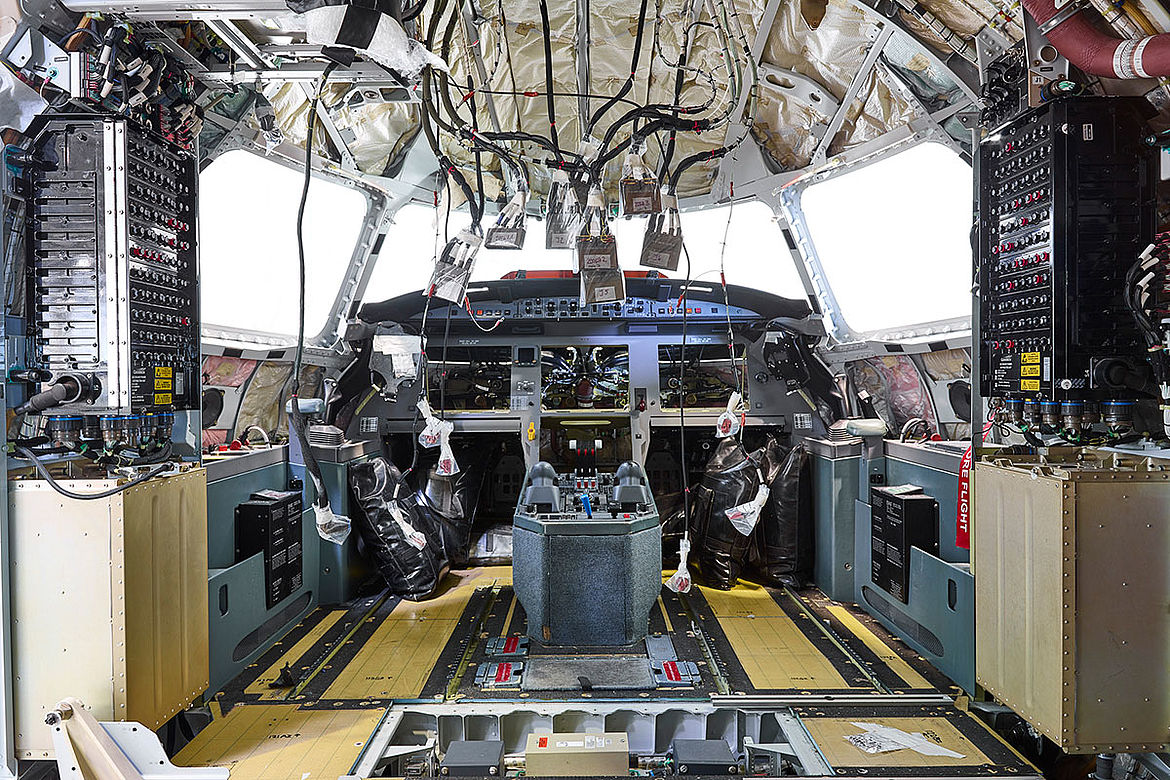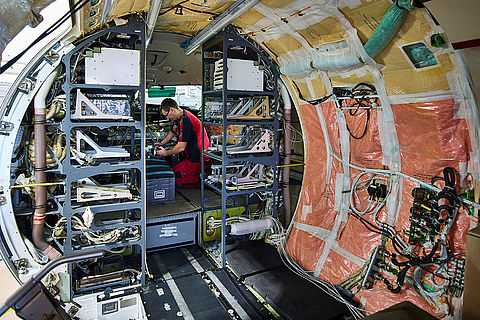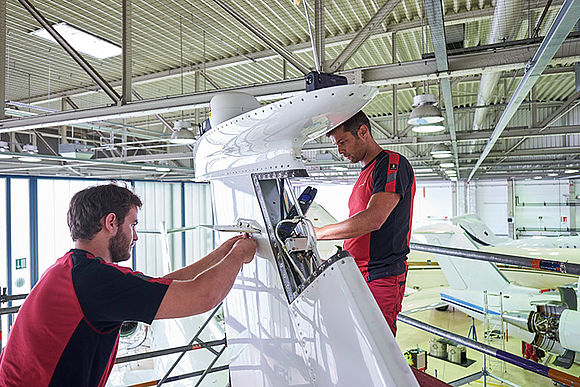The importance of avionics - explained by using the example of ADS-B Out
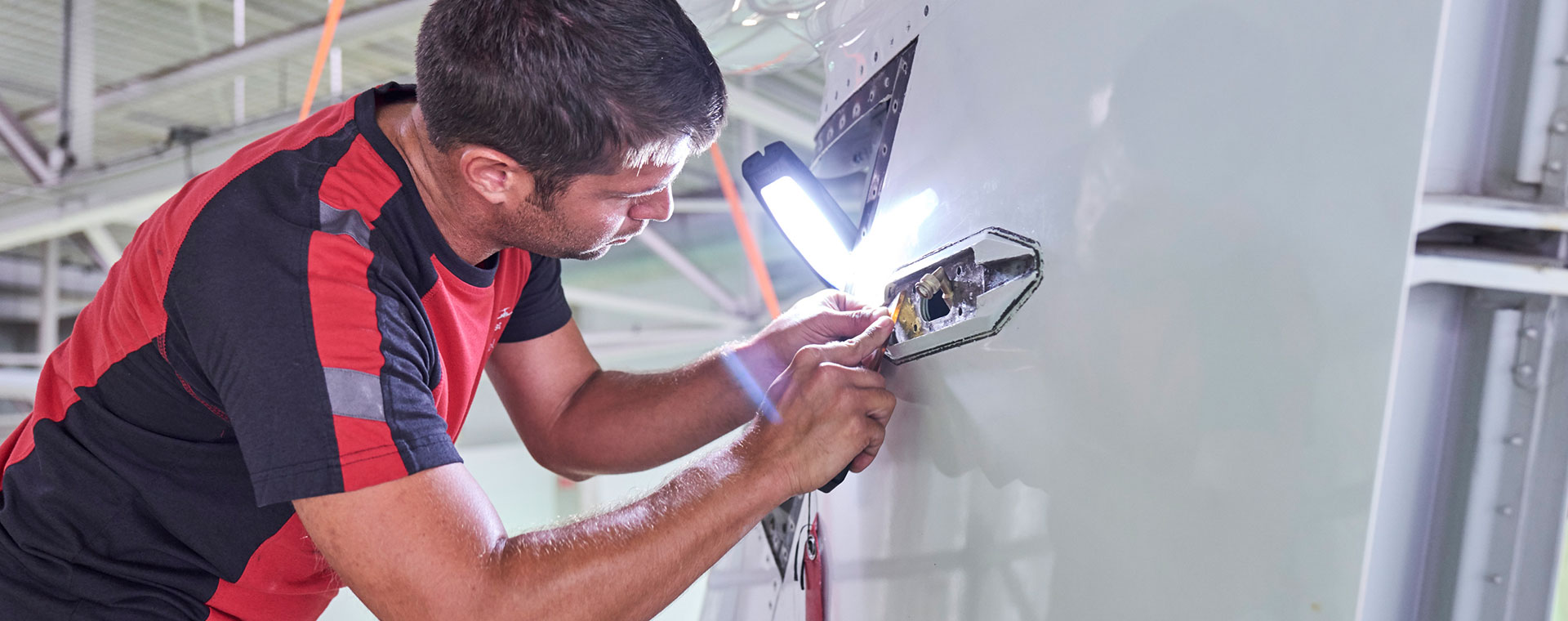
Why avionics engineers also help with decisions – using the example of the ADS-B Out mandate
Avionics conversions and retrofits are indispensable – but not always comprehensible. That's why we explain this as clearly as possible.
In an interview, avionics expert Thomas Opelt talks about the requirements of the aviation authorities, a dynamic environment and autonomous flying.
Note:
This interview contains statements about the ADS-B Out mandate. The status and regulations for this mandate could change quickly. Do you work in business aviation, or do you own a business jet? Then please call us if you have any questions regarding the ADS-B Out mandate.We talked to him – about avionics, customer communication and the future of business aviation.
It’s a rainy morning. Thomas Opelt is sitting at an office desk. He has taken his time for this interview (quote: "at least one hour"). This office is also used by customers of Aero-Dienst – pilots or maintenance and camo representatives – while their business jets are being serviced.
ADS-B Out Mandat
What is the ADS-B Out mandate?
When is the ADS-B Out mandate mandatory?
Who decides on the ADS-B Out mandate?
Thomas, ADS-B Out is an avionics retrofit that was supposed to become mandatory in Europe as early as June 2020, but was then postponed. Even in May 2020, not all business jet operators had converted their jets. Have the operators and owners of business jets still not realized the relevance of ADS-B Out?
"Ultimately, exactly the right person must realize its relevance, namely, the person who also makes the decisions and pays the money. In our industry, there are often several people between me, who specifically manages the work on the aircraft, and the future user of the business jet. We have to explain the possible future importance of ADS-B Out in a simple and clear way, and then the decision-shapers, i.e. those who act as the point of contact between the owner and us, can communicate this just as clearly and simply to the decision-makers in the company."Thomas, explaining changes in a simple way sounds good. What does this mean for your work?
"It means reducing the complexity of technical specifications together with the customer’s contact person, and not only for ADS-B Out. The technical background is almost always irrelevant to the user of the business jet; he just wants to fly. But our contact persons have to make a good decision, and we help them to do so. If that doesn't happen, in the worst case scenario, the aircraft will have to be grounded at some point."In your opinion, is a time coming when a business jet without ADS-B Out will be grounded?
"The current deadline for aircraft registered in Europe is December 7, 2020 – as things stand now, no business jets without ADS-B Out will be allowed to fly from then on. According to EASA regulation 2020/587, an exemption applies to aircraft with a "first individual Certificate of Airworthiness" before June 7, 1995. This is like a grandfather clause for older aircraft that would be far too cost-intensive to retrofit.
But we must not forget: The ADS-B Out mandate affects aviation in general, including all major airlines, and not only business aviation. So, this is a big task for the whole aviation industry. After December 2020, there will still be a waiting period and special permits that will be subject to certain conditions. We were already playing it safe a few months before June, the original deadline, and retrofitted our entire fleet with ADS-B Out.
Thomas, why are avionics processes like using or retrofitting ADS-B Out so difficult to explain, even though they are so important?
"Explaining the technical stuff itself is not difficult, but there’s a lot of money involved. It's like this: we usually talk to the people who manage business jets on behalf of the owners. These are technicians who understand that ADS-B Out is necessary. With older business jets, many people aren't even sure whether buying a new aircraft might be a better idea than the conversion. Others apparently wait and see whether the authorities will still change their minds. Many customers who use their business jets only for their own business to fly from A to B are more cautious. Others who charter out their business jets or who rotate the use of the aircraft with other passengers are more likely to retrofit – in that case it would be particularly annoying if the aircraft had to be grounded."Do you think it’s a general communication problem in the industry? Do the owners not see the relevance, the necessity? You said it yourself: it's a costly measure.
"With old planes, it’s certainly a major procedure. With those we have to replace a lot of things, a lot of digital basics in avionics are missing. It's costly, and the conversion of the avionics is invisible to those who end up paying for it."
The "avionics cross?"
"Yes. When our customers with my colleague Mark-André Mann change the interior design in their business jet Interior Design im Business Jet, they immediately see a change. Or they even feel it when the seat covers are new. Avionics can cost about the same amount but is unseen by the aircraft owner. Anyone who invests a few hundred thousand euros in the avionics of his business jet does not necessarily have to see a difference. The only "benefit" is that the aircraft can fly. This perceived "gap" between our efforts and the result can only be solved by the good communication mentioned above. We have to mediate, advise, safeguard decisions."
Do pilots have to change anything when ADS-B Out comes?
"No. I would almost have to say: unfortunately no. Because then even they don’t necessarily understand immediately why ADS-B Out is important, that it can cost the airworthiness of the aircraft. That only makes it more difficult to communicate."
Thomas, there's a little bit of a parallel there with the car, isn't there? There too, more and more electronics are hidden under the hood; it’s becoming more and more complex – and therefore more expensive.
"That's right, and in the cockpit too, by the way. If you're sitting in a car from a well-known e-car brand from the USA, the cockpit actually consists only of a steering wheel and a tablet. This is also the direction things are going in with the business jet, except that the criteria are perhaps a little more complex."
What criteria do you mean, in terms of avionics?
"For example, there are criteria for different airports – if they’re not met, I’m not allowed to fly to those airports. Not just any aircraft is allowed to fly to London City; there must be a requirements specification."
And how will this look in the future; will avionics become even more complex? Will the parallel to automotive development continue?
"Yes, the parallel to the car can continue – at least in the very long term. An aircraft cockpit with just a tablet – like with a Tesla – is conceivable. Everything is becoming more digital, including business aviation. Passengers can use their own devices on board – ever more often and more easily."
Now you've talked about autonomous driving yourself, Thomas. Is that an option for business aviation?
"Autonomous flying? Not in the short or medium term. Compared to the car, there are more variables, more axes than just forward, backward, left and right. It's going to be tough to cover the vertical as well. The queries that would have to be made simultaneously to be able to fly a business jet autonomously like that would be enormous. And then the aviation authorities have to allow it. All this will take at least another half a century. But the job description of the avionics engineer will change much faster."
Would you like to know what we can do for you in the field of avionics solutions?
You can find out more about us here or our services in Aircraft Maintenance here.
